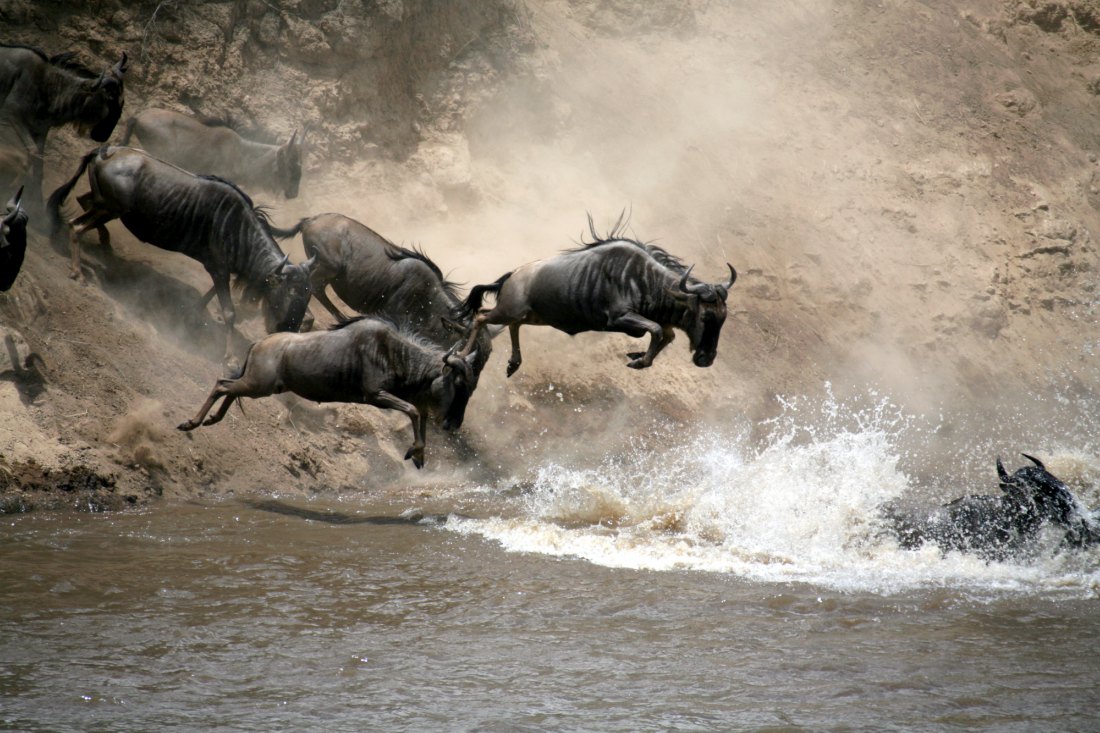Wildebeest Migration: Tourism is one of Kenya’s top foreign exchange earners, contributing 10% of the country’s annual revenues. However, in 2020, this sector was shaken by the outbreak of the Covid-19 pandemic as Kenya and the whole world locked up borders to curb the spread of the deadly virus.
In December, Kenya’s tourism sector lost close to $1 billion (over Ksh100 billion) in revenue between January and October 2020 when numbers of foreign tourists fell by two thirds due to Covid-19, according to Tourism and Wildlife Cabinet Secretary (CS) Najib Balala.
Popular tourist destinations, such as the Maasai Mara in Narok County and other world-class wildlife reserves and holiday destinations at the coast, took a heavy beating.
Kenya’s tourism industry, as it were, contributes 10% of economic output and employs over two million people, a large percentage of whom lost their jobs due to the pandemic.
Data from the Ministry of Tourism shows the sector raked in Ksh163.5 billion in 2019 and is projected that the figure would grow by 1% in 2020. International visitors fell to fewer than 500,000 in the first 10 months of 2020 as compared to 1.7 million in the same period in 2019, leading to a loss of Ksh100 billion.
Maasai Mara wildebeest migration
So important is Maasai Mara to Narok as a wildlife county that it earns more than 60% of revenue from wildlife with the famous Maasai Mara Game Reserve, known worldwide for its spectacular wildebeest’s migration, providing the bulk of this revenue.
The annual Great Migration of white-bearded wildebeest, also known as gnus, is a breathtaking sight that attracts both local and international tourists to Kenya’s world famous Maasai Mara National Game reserve. It has been classified as one of the eighth natural wonders of the world.
During the months of July to September every year, the Maasai Mara and Serengeti ecosystems experience large herds of wildebeest and zebras migrating from Serengeti National Park in Tanzania to Maasai Mara and back in search of pasture and water and giving birth, travelling a total of 800 kilometres or more during each cycle.
This year the grand crossing began on 5th July and is expected to continue as millions of the gnus cross the River Mara in their droves, oblivious of the danger lurking in the waters as crocodiles wait to make a meal out of any of them. Some gracefully graze along the river on the border of Kenya and Tanzania.
Tourism industry contributes 10 per cent of economic output and employs over 2 million people.
Last year, the number of tourists who visited the reserve to witness this specular event dropped significantly owing to the coronavirus pandemic.
The General Manager of Kichwa Tembo and Bateleur camps in Maasai Mara, Mr James Chege, is hopeful that tourists who started arriving late last month at the world-famous Maasai Mara Game Reserve, ahead of the glorious wildebeest migration, will continue coming in to boost the tourism sector.
Most of the international tourists, who are from America and more than 100 local tourists have checked in at the camp to witness the migration of the hundreds of wildebeests from the Serengeti National Park in Tanzania to Kenya.
See >> Why Kenya Has Banned Lotteries On Radio Stations
The Camps Manager notes that the tourism sector is still recovering from the effects of the pandemic that resulted in massive booking cancellations and called on Kenyans to continue adhering to the Ministry of Health guidelines to prevent another lockdown that could bring down tourism again.
Captain Marion Micah Sugwara, from Air Kenya, who brought in a group of tourists, says that life wasn’t easy last year as no one was travelling or touring during the lockdown. She added that the workers in the tourism sector like her literally struggled to put food on the table but added, things are looking up now with the partial reopening of the country and other world economies.
She is elated at the resumption of their flight services for a month now and with the wildebeest migration that has attracted a good number of her flight passengers. The wildebeest migration event is evidently exciting for not only those in the tourism industry but visitors who are looking to make memories out of this year`s event. (KNA)













Leave a comment